Home » Surgical » Eye Procedures » Asian Upper Blepharoplasty
Home » Surgical » Eye Procedures » Asian Upper Blepharoplasty
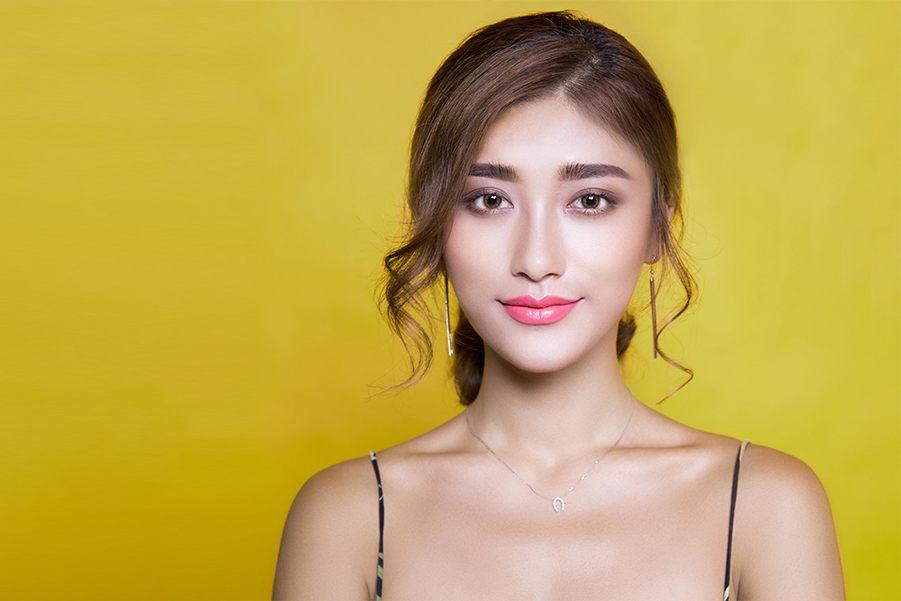
Home » Surgical » Eye Procedures » Asian Upper Blepharoplasty
Big, bright, beautifully shaped eyes have long been considered a feature of beauty. Double eyelid surgery or East Asian upper blepharoplasty is one of the most common aesthetic surgical procedures performed in the Asian population.
The uniqueness of the Asian upper eyelid anatomy and characteristics make Asian Upper Blepharoplasty a highly specialized surgery that demands significant mastery of surgical skills. Highly experienced in Asian Plastic Surgery, our surgeons at Wave Plastic Surgery are knowledgeable in the most advanced microplastic techniques and use the utmost precision and attention to detail to create an upper eyelid crease that is clearly defined, symmetric, and aesthetically pleasing.
Our surgeons spend time discussing your individual preferences for the size and shape of the eyelid and provide a detailed treatment plan on how to achieve the best results that meet your needs. The goal of Asian Upper Blepharoplasty is to create a youthful, attractive eyelid that preserves the natural shape and inherent beauty of the Asian Eyelid.
The Asian eyelid has several anatomical differences that make them culturally distinct. The most important difference between a single and double eyelid is the location of the lid crease and the formation of the skin fold.
In double eyelids, the skin fold is above the eyelashes because the lid crease is well defined and sufficiently high. The lack of the eyelid skin attachment to the levator muscle causes a single eyelid or monolid appearance. Fat extending further down on to the tarsus creates a “puffy” or “swollen” eyelid appearance.
An epicanthal skin fold commonly exists over the inner corner of the eye causing the length of the eyes to appear shorter. In addition, the eyes can appear sleepy or heavy due to blepharoptosis or an inherent weakening of the levator muscle.
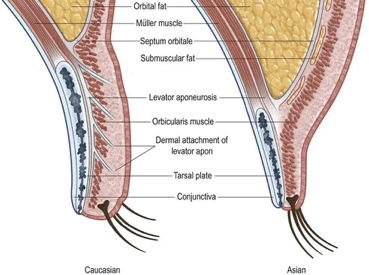
The eyelids can have three major shapes and patterns:
Three main surgical techniques are used to create the double eyelid fold. Double eyelid surgery is extremely specific and customized due to the inherent differences in anatomy, personal goals, and preferences.
When choosing the most appropriate method, individual characteristics of the eyelids, such as the amount of excess skin, heaviness of the eyelids, asymmetry, ptosis, eye shape, as well as the type of double eyelid desired must be considered. The recommended surgical approach to accomplish your specific goals and desired results will be discussed in detail during your initial consultation.
At Wave Plastic Surgery, a special threading technique is used to create the double eyelid crease. This procedure takes approximately one hour and can be performed under local anesthesia with light sedation. Through tiny punctures made along the eyelid skin, the permanent fine suture is meticulously threaded and anchored to the tarsus in a continuous fashion to create the double eyelid crease.
The results are long-lasting, natural-appearing eyelid folds that make the eyes appear bigger, brighter, and more inviting. Since skin or muscle is not removed, a full incision is not needed. The amount of swelling and bruising is minimal, leading to an overall quicker recovery.
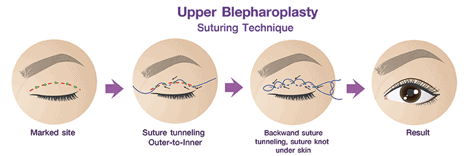
Anesthesia: Local Anesthesia and IV Sedation
Procedure Time: 1 hour
Pain: 2/10
Suture Removal: 3-5 days
Follow up: 5 times
Recovery: 5-7 days
Two or three small incisions are created along the desired double eyelid created. Excess fat is removed when necessary. Fixation sutures are placed, connecting the tarsus to the muscle and dermis layer of the skin which create the double fold line. Very fine sutures are then used to meticulously close the incisions.
Anesthesia: Local Anesthesia and IV Sedation
Procedure Time: 1 hour
Pain: 2/10
Suture Removal: 7 days
Follow up: 5 times
Recovery: 7-14 days
The full incision is made along the entire upper eyelid to create the desired crease. Excess fat, muscle, subcutaneous tissue and skin are removed. Fat resection should be conservative to avoid hollowing or sunken in appearance. Fixation sutures are placed to connect the tarsus and levator muscle to the dermis of the skin, creating a natural, defined upper eyelid crease. Very fine sutures are then used to meticulously close the incisions.
Anesthesia: Local Anesthesia and IV Sedation
Procedure Time: 1 hour
Pain: 2/10
Suture Removal: 7 days
Recovery: 7-14 days
Follow up: 5 times
Heavy, sleepy-looking eyes can be due to blepharoptosis (ptosis) or weakening of the inner eye-opening muscles which can prevent the full opening of the eye aperture. This condition can affect both younger and older patients.
The normal distance between the pupil and upper eyelid is 4 mm and if <2mm, then one can be considered to have blepharoptosis. Ptosis correction involves tightening the Levator and Muller muscles to enable the eyes to open in the vertical dimension. As an adjunctive procedure to upper eyelid surgery, ptosis correction can help enhance aesthetic results, making eyes appear bigger and brighter.
Your eyes will have some swelling and bruising after the procedure with mild discomfort. Your recovery period will fluctuate based on the eyelid method implemented and can range from 7-14 days. Swelling and bruising can be minimized with proper care, including cool compresses, hydration, rest, and eating less salty foods. Medications that may include ointments that will keep eyes moist and healthy during the healing process are prescribed.
Patients will return in one week to evaluate their eyelids and remove sutures. Follow-up appts will be scheduled to monitor your recovery and address any concerns or questions.
Asian Upper Blepharoplasty is generally well tolerated. Although rare, some risks and complications can occur, such as bleeding, infection, dry eyes, corneal irritation, lagophthalmos or difficulty with eyelid closure, asymmetry, skin changes, scarring, visual disturbance, or need for additional or revision surgery.
If this is your first time undergoing surgery, even minimally invasive surgery, you likely have many questions. Here are the most common questions that patients ask.
Double eyelid surgery is performed under light intravenous sedation along with local anesthesia to numb the eye area. Patients remain awake during the procedure but are comfortable without experiencing any pain. Double eyelid surgery is not considered to be a painful procedure and typically Tylenol can be taken for any discomfort as needed.
Even if you don’t show aging symptoms, these treatments can act as a preventative measure.
Very small, fine sutures are meticulously placed along the eyelid incision and are typically removed in 7-10 days.
Double eyelid surgery is also known as East Asian Blepharoplasty. It is one of the most common surgeries performed among patients of Asian ancestry.
Double eyelid surgery is a very safe procedure. Our surgeons at WAVE are knowledgeable about the unique Asian eyelid anatomy and are extremely experienced with performing double eyelid surgery, ensuring a safe and successful surgical outcome.
Most of the swelling will resolve within 2-3 weeks after surgery. Frequent application of cold compresses can reduce swelling and expedite recovery time.
The goal of double eyelid surgery is to enhance one’s eyes and make them appear bigger and brighter.
Initially, the eyelids will have swelling after surgery and typically will take 2-3 weeks for the majority of the swelling to resolve. Once the swelling improves, the eyelids will begin to look and feel more natural.
Give us a call today to schedule a consultation with one of the plastic surgery experts at Wave Plastic Surgery to learn more about the procedure and the thread face lift cost.
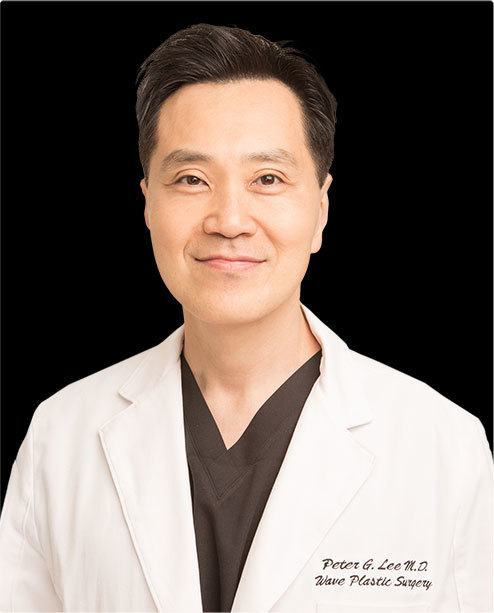
Dr. Peter is CEO and Chief Surgeon of WAVE Plastic Surgery Center with over 20 years of plastic surgery experience, overlooking 30K+ successful plastic surgery cases. He has mentored master surgeons around the world in state-of-the-art techniques, and has been inducted into the RealSelf 100 & 500 Hall of Fame.
His many accolades and shining results are evidence of Peter’s expertise.
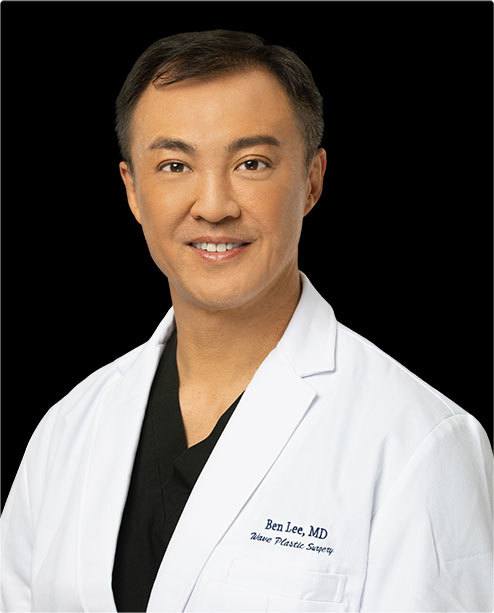
Throughout 20+ years in aesthetic plastic surgery, Dr. Ben Lee has always been passionate about using his skills to impart a lasting, positive impact on the lives of his patients.
“Time and time again, I have witnessed dramatic improvements in a patient’s confidence and well-being after a relatively minor cosmetic or reconstructive procedure. As a surgeon, that brings me great joy.” — Dr. Ben Lee
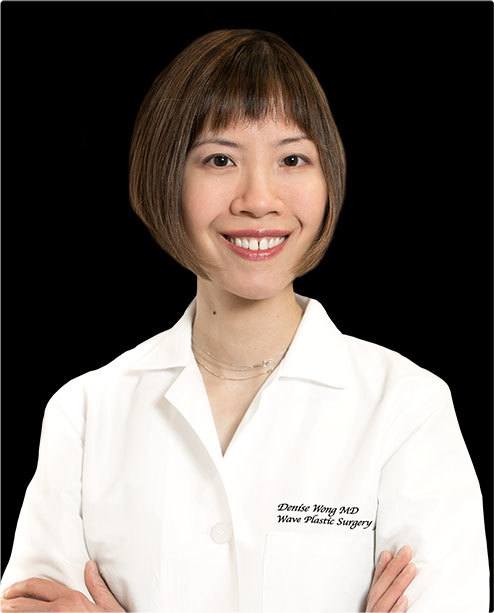
Specializing in Upper Eyelid Surgery, Dr. Wong has a deep understanding of the unique anatomy of the eyelid which is critical in performing this highly technical and intricate surgery. She is experienced in approaching various specific eyelid characteristics for different ethnicities, especially Asian cultures.
She uses precise microplastic surgical techniques to enhance the natural shape and inherent beauty of your eyes, making them appear bigger and brighter.